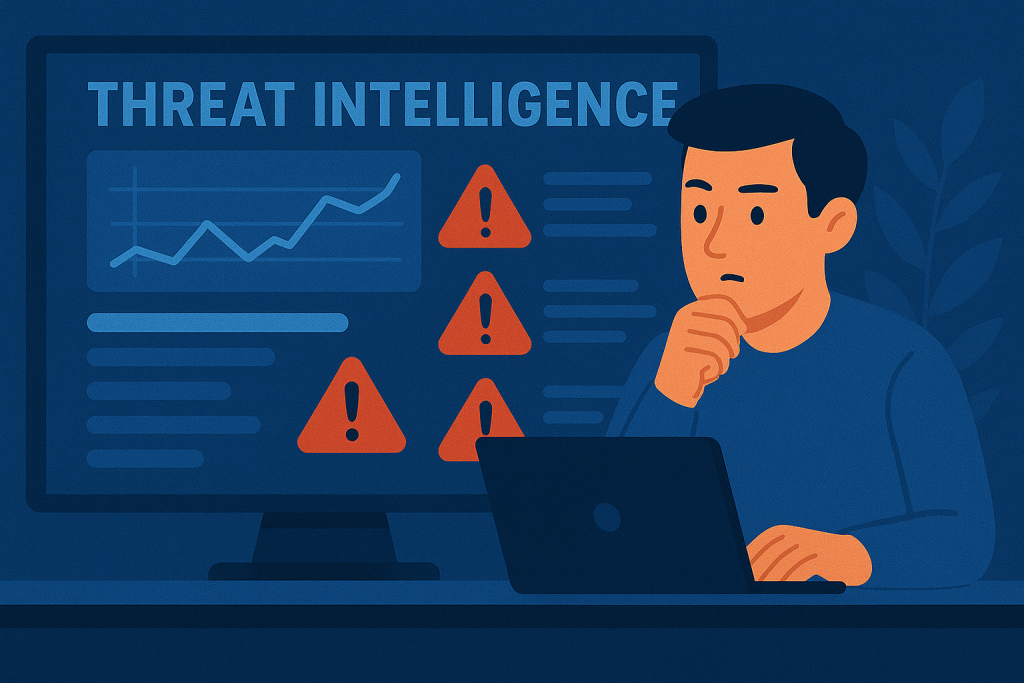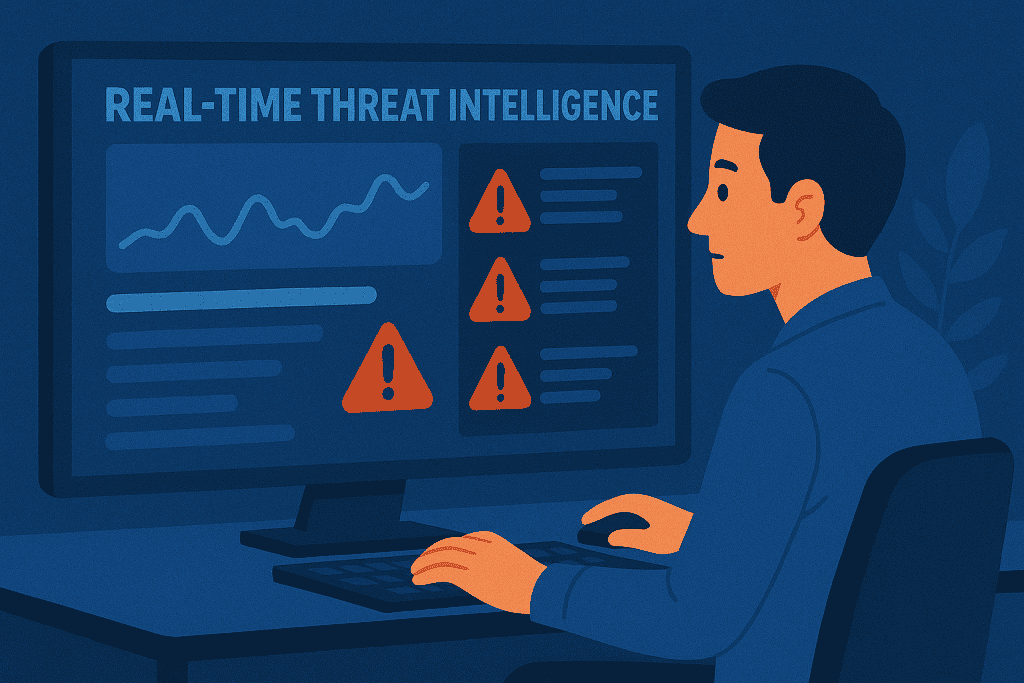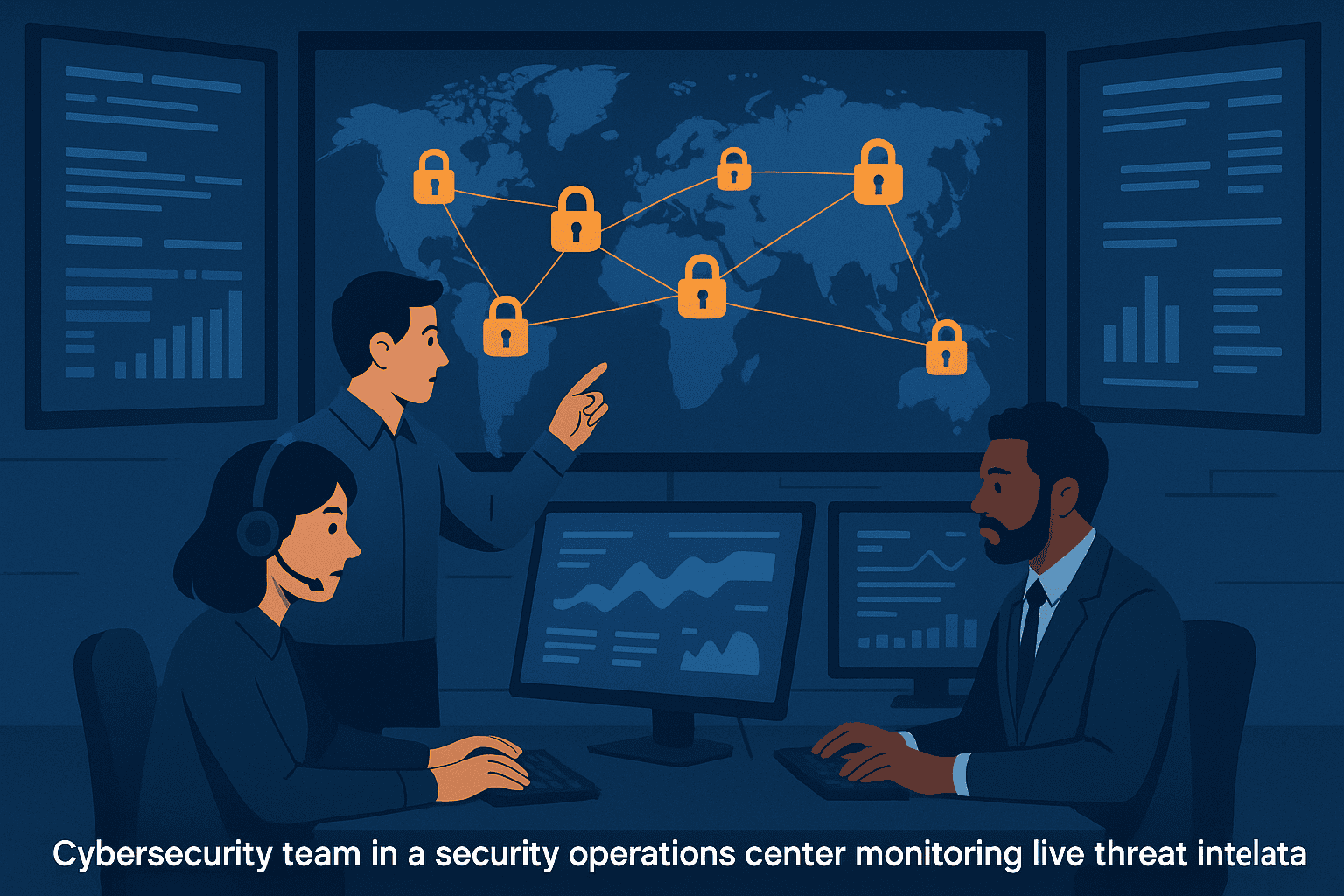
Cyber threats are everywhere, and businesses of all sizes are at risk. Attackers constantly find new ways to exploit vulnerabilities, making traditional security measures insufficient. That’s why cyber threat intelligence (CTI) is crucial. Instead of reacting after an attack, CTI helps you predict, prevent, and neutralize threats before they cause harm.
By gathering and analyzing threat data, you can spot malicious activity early and strengthen your defenses. Whether you’re an IT professional, a business owner, or just someone concerned about online security, this guide will walk you through using CTI effectively.
What You’ll Need
Before you start, ensure you have the right tools to gather and act on threat intelligence.
| Tool/Material | Purpose |
|---|---|
| Threat Intelligence Platform | Collects and analyzes threat data |
| Firewall & Antivirus | Blocks malicious traffic and threats |
| SIEM (Security Information and Event Management) | Provides real-time monitoring |
| Cybersecurity Training | Enhances awareness and readiness |
| Incident Response Plan | Helps handle security breaches |
Having these tools in place ensures a more efficient and proactive security strategy.
Step-by-Step Instructions
1. Gather Cyber Threat Intelligence Data

Start by collecting real-time intelligence from reliable sources. Cyber threats evolve constantly, so staying updated is key. You can get intelligence from:
- Open-source intelligence (OSINT) – Public threat reports and research
- Private threat intelligence vendors – Paid services with specialized threat data
- Government cybersecurity advisories – Agencies like CISA, NIST, and ENISA provide updates on cyber risks
Once you gather intelligence, categorize threats based on severity and relevance. This helps you focus on high-priority risks.
2. Analyze and Prioritize Threats
Not all cyber threats require immediate action. Some vulnerabilities are minor, while others pose a serious risk. Understanding which threats need urgent attention helps security teams focus their efforts where they matter most.
Cybersecurity professionals use structured frameworks like MITRE ATT&CK to categorize threats based on known attack methods. These frameworks help organizations identify how attackers operate, which systems they target, and how to mitigate risks effectively.
One key aspect of prioritization is recognizing Indicators of Compromise (IoCs)—early warning signs of a potential breach. These include:
- Unusual network activity (e.g., unauthorized access attempts or data transfers).
- Phishing emails disguised as legitimate requests.
- Connections to known malicious domains or IP addresses.
Automated tools like SIEM (Security Information and Event Management) platforms help organizations process large volumes of threat data, flagging high-risk threats for immediate action. Prioritizing threats ensures that security teams address critical vulnerabilities before attackers can exploit them.
3. Implement Security Measures
Once threats are analyzed, action must be taken to mitigate risks. Organizations should apply security measures across different areas of their infrastructure:
| Security Layer | Purpose | CTI’s Role |
|---|---|---|
| Network Security | Protects data as it moves between systems. | Identifies malicious traffic and blocks suspicious IP addresses. |
| Endpoint Security | Secures devices like computers and servers. | Detects malware and flags unauthorized access. |
| Cloud Security | Protects cloud-based data and applications. | Monitors for cloud-specific attack patterns. |
Threat intelligence helps fine-tune security measures by identifying new attack trends and vulnerabilities. For example, if CTI reports show a spike in ransomware attacks, organizations can immediately review backup strategies, update endpoint protections, and train employees to recognize suspicious emails.
A proactive security approach ensures threats are neutralized before they can cause damage.
4. Monitor and Adapt

Cybersecurity is an ongoing process. Continuous monitoring helps detect new threats before they escalate into serious incidents. Organizations should:
- Set up real-time alerts to detect suspicious activity.
- Conduct regular penetration testing to find and fix security weaknesses.
- Update threat intelligence feeds to stay informed about emerging risks.
Regularly reviewing and adapting security measures ensures long-term protection against cyber threats.
Tips and Warnings
Using cyber threat intelligence (CTI) effectively requires a strategic approach. Simply collecting threat data isn’t enough—organizations must know how to interpret, apply, and update their intelligence to stay ahead of evolving cyber threats. Below are some best practices to maximize CTI effectiveness and common mistakes to avoid.
Best Practices for Effective Cyber Threat Intelligence
| Tip | Why It Matters |
|---|---|
| Use multiple threat sources | Relying on a single intelligence feed limits visibility. Combining open-source, commercial, and industry-specific feeds ensures a broader and more accurate understanding of threats. |
| Automate threat detection | Manual monitoring is time-consuming and prone to human error. Automation helps detect suspicious activities in real time, allowing faster responses to potential threats. |
| Train employees regularly | Employees are often the weakest link in cybersecurity. Regular training on phishing scams, password security, and social engineering reduces the risk of human error leading to a breach. |
| Update security software | Attackers constantly develop new methods to bypass outdated defenses. Keeping firewalls, antivirus, and intrusion detection systems up to date ensures protection against emerging threats. |
A proactive approach to CTI helps businesses anticipate and mitigate cyber risks rather than reacting after an attack occurs.
Common Mistakes to Avoid
Even with strong CTI strategies, some common mistakes can weaken an organization’s defenses:
- Ignoring minor threats – Small security vulnerabilities may seem insignificant, but attackers often exploit them as entry points for larger attacks. Overlooking these weaknesses can lead to serious breaches.
- Relying on outdated intelligence – Cyber threats evolve daily. Intelligence that was relevant last month may no longer apply today. Continuous updates ensure organizations stay informed about new risks.
- Skipping employee training – Many cyberattacks, especially phishing and social engineering scams, target human vulnerabilities rather than technical weaknesses. Organizations that don’t invest in cybersecurity training put themselves at unnecessary risk.
By following best practices and avoiding these common mistakes, businesses can strengthen their cybersecurity posture and make better use of cyber threat intelligence to protect against attacks.
Conclusion
Cyber threat intelligence is your best defense against digital attacks. By gathering, analyzing, and acting on threat data, you can stay one step ahead of cybercriminals.
Start implementing these strategies today. The stronger your security, the safer your digital world will be. Stay vigilant, stay secure!
FAQ
What is cyber threat intelligence, and why is it important?
Cyber threat intelligence is the process of collecting, analyzing, and using data on cyber threats to prevent attacks. It helps organizations stay ahead of evolving risks and reduce the impact of security incidents.
How do I start using cyber threat intelligence?
Start by subscribing to threat intelligence feeds, setting up security monitoring tools, and training employees. Prioritize threats based on severity and implement proactive security measures.
Can small businesses benefit from cyber threat intelligence?
Yes. Small businesses are often targeted by cybercriminals because they have fewer security resources. Cyber threat intelligence helps them detect risks early and protect their data from attacks.
Resources
- Any.Run. How to Use Cyber Threat Intelligence
- Palo Alto Networks. Cyber Threat Intelligence
- ISACA. How to Use Cyber Threat Intelligence to Reduce Cyber Risk
- DataGuard. Use Cyber Threat Intelligence Platforms to Strengthen Your Cyber Defense
- Medium. Integrating Threat Intelligence into Security Operations
